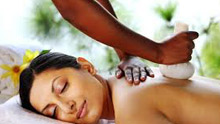Ayurveda – rejuvenate yourself
 Aternative Therapies in India for Medical Treatment-India is renowned for ancient alternative therapies such as Ayurveda, Yoga and Meditation,
and Therapeutic Massage. India is an exotic tourist destination offering everything from beaches, mountains, cosmopolitan cities, quaint villages
and pilgrimages to suit every palate. Rich in history and culture, India has proved to be an oasis in the modern world, providing complete health
and well being, while providing the latest in technology.
Aternative Therapies in India for Medical Treatment-India is renowned for ancient alternative therapies such as Ayurveda, Yoga and Meditation,
and Therapeutic Massage. India is an exotic tourist destination offering everything from beaches, mountains, cosmopolitan cities, quaint villages
and pilgrimages to suit every palate. Rich in history and culture, India has proved to be an oasis in the modern world, providing complete health
and well being, while providing the latest in technology.
Ayurveda (or Ayurvedic medicine is a system of medicine with historical roots in the Indian subcontinent. Globalized and modernized practices derived from Ayurveda
traditions are a type of complementary or alternative medicine In the Western world, Ayurveda therapies and practices (which are many fold) have been integrated
in general wellness applications and as well in some cases in medical use.
Ayurvedic therapies have varied and evolved over more than two millennia. Therapies are typically based on complex herbal compounds, while treatises written after about 1000 CE introduced mineral and metal substances (. Ancient Ayurvedic treatises also taught surgical techniques, including rhinoplasty, perineal lithotomy, the suturing of wounds, and the extraction of foreign objects
Practice
Ayurvedic doctors regard physical existence, mental existence, and personality as a unit, with each element being able to influence the others] This is a holistic approach used during diagnosis and therapy, and is a fundamental aspect of Ayurveda. Another part of Ayurvedic treatment says that there are channels (srotas) which transport fluids, and that the channels can be opened up by massage treatment using oils and Swedana (fomentation). Unhealthy channels are thought to cause disease.
Diagnosis
Ayurveda has eight ways to diagnose illness, called Nadi (pulse), Mootra (urine), Mala (stool), Jihva (tongue), Shabda (speech), Sparsha (touch), Druk (vision), and Aakruti (appearance). Ayurvedic practitioners approach diagnosis by using the five senses. For example, hearing is used to observe the condition of breathing and speech The study of the lethal points or marman marma is of special importance.
Treatment and prevention
Two of the eight branches of classical Ayurveda deal with surgery (Śalya-cikitsā and Śālākya-tantra), but contemporary Ayurveda tends to emphasise attaining vitality by building a healthy metabolic system and maintaining good digestion and excretion. Ayurveda also focuses on exercise, yoga, and meditation One type of prescription is a Sattvic diet.
Ayurveda follows the concept of Dinacharya, which says that natural cycles (waking, sleeping, working, meditation etc.) are important for health. Hygiene, including regular bathing, cleaning of teeth, skin care, and eye washing, is also a central practice.